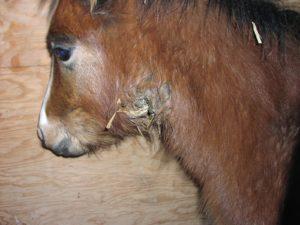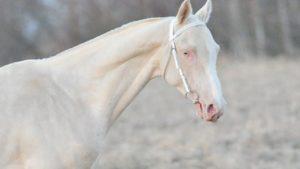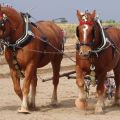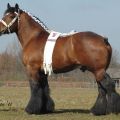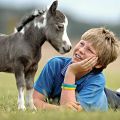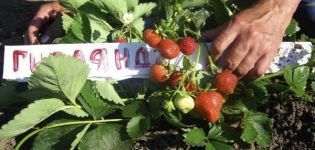Characteristics of Dutch warm-blooded horses and breed description, breeding and care
The elite color of Dutch warm-blooded horses is popular all over the world. The proportional racehorses excel in equestrian sports and are highly intelligent. The Dutch warm-blooded horse breed acquired official status in the 20th century, at a time when horse riding was gaining popularity everywhere. Graceful horses are easy to train and endlessly devoted to humans.
The history of the breed
Warm-blooded horses are called horses bred from crossing thoroughbred thoroughbred horses with draft species. Helderlander and Groningen are recognized as ancestors of the Dutch handsome men. In addition, according to the breeders, when creating the breed, various types of horses were used for mating. So, among the "Dutch" you can find Trakehner, Hanover, Westphalian, Holstein, Oldenburg and other signs.
The breed was officially registered in the KWPN studbook in 1959. At the same time, work on improving the breed continued, after 20 years the species was improved. After another 10 years, the Dutch warm-blooded woman received the royal title.
Description and characteristics of the Dutch warm-blooded horse
The main purpose of the Dutch warm-blooded horses is horse riding and participation in equestrian sports competitions. A regular, proportional body with a classic silhouette is the hallmark of the exterior. Characteristics and description of the breed:
- classic type of cereal;
- correct balanced physique;
- running - soft, fast, graceful;
- the average stallion height is 168 centimeters;
- different color is allowed;
- chest and neck muscular, well developed;
- legs are long, strong, muscular relief is clearly expressed on the hips;
- character is peaceful, obedient, horses are devoted to man.

The ability of animals to participate and win in equestrian sports is determined by genetic endurance and a tendency to learn and train. Currently, there is a strict selection among the representatives of the breed, artiodactyls with minor defects are quickly rejected.
On a note: horses with a height at the withers above 170 centimeters are not suitable for sports equestrian competitions, with such a physique a huge load on the joints and tendons is created.
Advantages and disadvantages
The main advantages of the breed include:
- intelligence and obedience;
- strong muscular body and "light" legs;
- endurance and tenacity;
- the ability to adapt to changing environments and regions of content;
- aesthetic appeal of purebred representatives of the breed.
The wide, powerful chest, combined with strong legs and correct body proportions, allow the horses to carry the team with their heads held high, which makes the Dutch beauties unique in the class of draft horses.

The disadvantages of Dutch warm-blooded animals include:
- in tall specimens, joint injuries are likely;
- Due to the frequent births of foals that do not meet all the breed criteria, a strict system of assessing breeding stallions and mares is necessary.
Even after the animal is recognized as a purebred representative of the breed, throughout its life, it will have to periodically send it for reevaluation. Observation of representatives of the breed, according to the rules, is carried out all life.
Subtleties of maintenance and care
In order for a horse to be happy, healthy and delight its owner with achievements, it is necessary to provide the animal with regular care, draw up a balanced diet, and equip a stable.
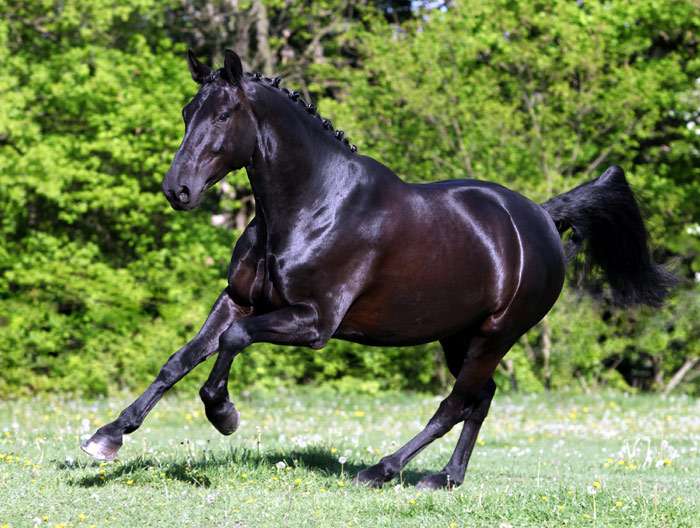
Stable
Dutch warm-blooded horses can be kept in three ways:
- in the stable;
- herd;
- stables-pasture method.
The most practical way of keeping is the stable method. The litter on the floor must be changed. In the building where the horses live, stuffiness should not be allowed, but the wind should not "walk" either. In regions with cold climates, the walls, floor and ceiling of the room should be insulated. An important requirement for creating a comfortable environment for animals is maintaining cleanliness. Stables are recommended to be cleaned and disinfected regularly.
Hygiene
Thoroughbred horses need regular grooming: washing, combing out the mane and tail, maintaining healthy legs and hooves. It is necessary to wash horses often, once a week; in hot weather, a cloven-hoofed bathroom is organized even more often. The mane and tail are washed with conditioner shampoo. After the shower, the animals are wiped dry and combed. Take care of clean, dry bedding to avoid foot and hoof disease.
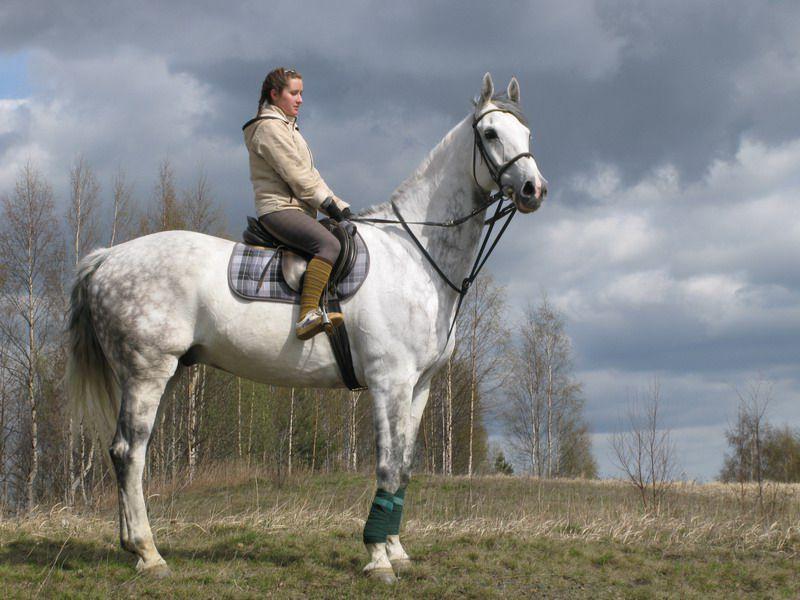
After each workout or grazing, the hooves are rubbed with a stiff brush, thoroughly cleaning the dirt from the hooves. The water should not be icy or very hot.
Nutrition
Features of feeding Dutch horses:
- the optimal number of meals is 3 times a day;
- food must be fresh and balanced;
- the calorie content of the diet is determined by the age of the animal, depending on physical activity and the characteristics of the content;
- in the autumn-winter period, the amount of vitamins in food is increased with the help of additives;
- horses should always have table salt in their diet;
- after feeding, the horse is sent for walking or training no earlier than 1 hour later;
- the water must be clean and not cold;
- the feeder and sippy cup are periodically disinfected and thoroughly washed after each meal.
The basis of the workhorse menu is made up of hay, vegetables and compound feed. Fresh vegetables, seaweed, garlic, yeast, nettle are used as fortified additives.
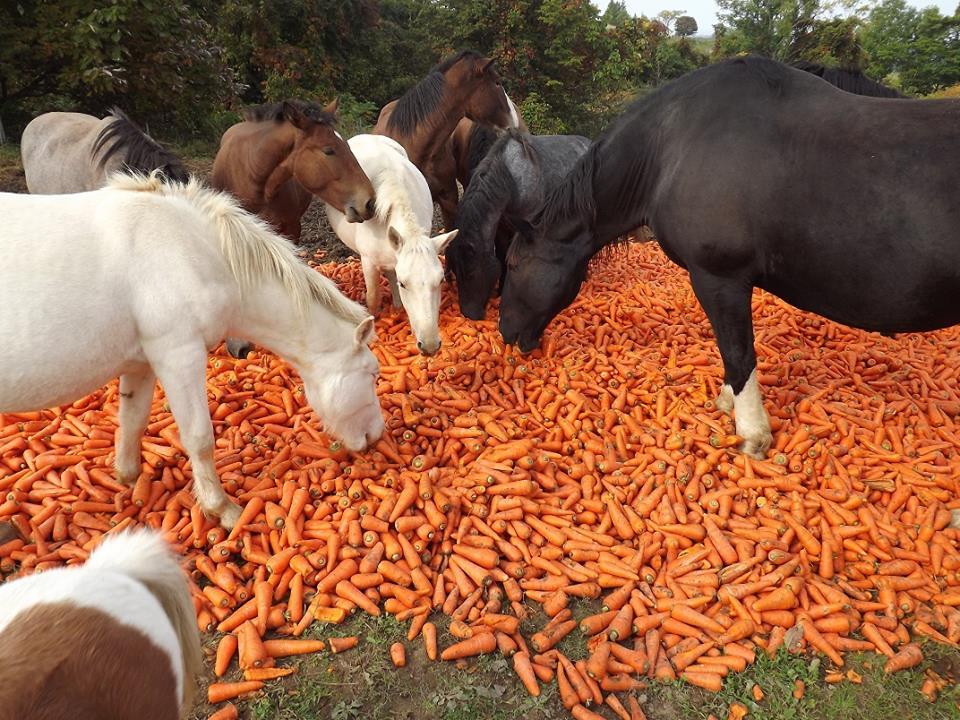
Fighting disease
Dutch warm-blooded horses are genetically endowed with stable immunity, they perfectly tolerate the processes of adaptation to new conditions. But this positive quality does not mean that you can refuse vaccinations and planned deworming.
The main factors provoking the development of diseases include:
- improper maintenance of horses;
- congenital defects;
- dirty, damp bedding, presence of mice and rats in the stable;
- lack of ventilation in the room where animals are kept;
- an outbreak of infection among individuals housed in the same stable;
- the diet is not balanced, the quality of the food is questionable.
Artiodactyls need regular check-ups for signs of illness.Decreased appetite, unmotivated aggression, loose stools, bloating, fluid flow from the eyes, skin defects, unpleasant odor and fever are reasons for an urgent veterinarian examination of animals.

Features of crossing and breeding
Working on the breed, creating standards, culling animals is the work of breeders who have given the world a unique breed. It is important to take responsibility for the selection of a pair for creating offspring. The best age for offspring in horses is 3-4 years, although animals reach sexual maturity earlier. To obtain a high-quality offspring, a novice breeder is recommended to contact a professional.
Modern use
The Dutch warm-blooded horse breed is versatile and versatile. Currently, foals of this species are purchased for participation in equestrian competitions and for riding in a team. The horse is ideal for riding, able to work on the farm.
The cost of elite horses can reach enormous sums, therefore the representatives of the breed are appreciated by collectors, the royal status of the breed is recognized throughout the world.
